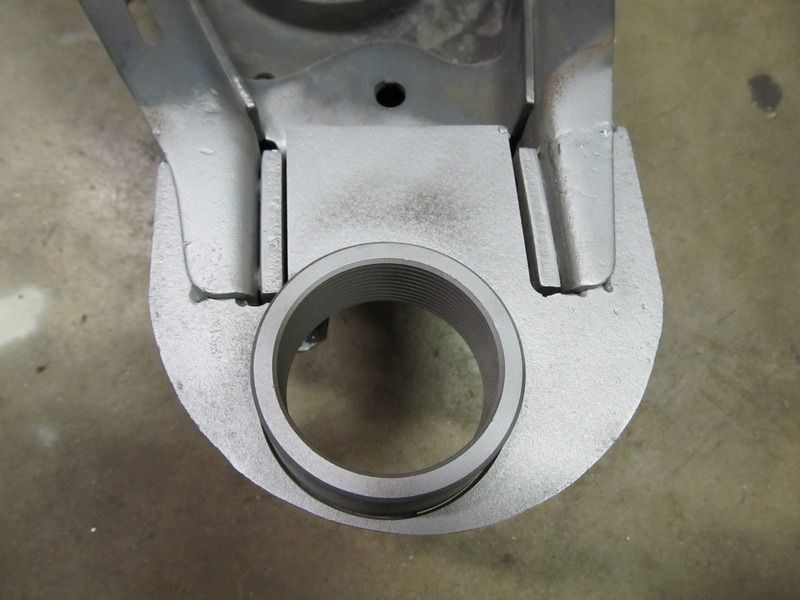For those of you who have installed Delrin bushings in the control arms, lowers in particular, what spacers, if any were used to fill the gap between the end of the shaft and the outer face of the bushing?
I ask this because the original rubber/steel bushings use the inner steel sleeve to hold pressure against the shaft and the outer washer. As the Delrin bushings work in a slightly different way, they let the shaft turn freely inside the bushing, there is a gap, however, between the end of the shaft and the outer face of the bushing, which is usually taken up with some sort of spacer, bush, or standoff.
I have different sets of Delrin from different vendors and one set I procured, in a parts lot, was missing some spacers. I can make some quite easily from an old control arm shaft that has been bent from an accident and is no longer serviceable. After drilling the thread out and cutting small slices I can have as many as I wish.
The question is, that I was wondering, how other vendors package these bushings, with spacers, o-rings etc... and if they are of different materials and dimensions.
Any information would help before I cut the shaft incase there is an easier way or an off the shelf part.
I have no idea who the original manufacturer of the set of bushings I am currently working with so I can not go that route. All I ended up with was the Delrin and no other parts.
Len
I ask this because the original rubber/steel bushings use the inner steel sleeve to hold pressure against the shaft and the outer washer. As the Delrin bushings work in a slightly different way, they let the shaft turn freely inside the bushing, there is a gap, however, between the end of the shaft and the outer face of the bushing, which is usually taken up with some sort of spacer, bush, or standoff.
I have different sets of Delrin from different vendors and one set I procured, in a parts lot, was missing some spacers. I can make some quite easily from an old control arm shaft that has been bent from an accident and is no longer serviceable. After drilling the thread out and cutting small slices I can have as many as I wish.
The question is, that I was wondering, how other vendors package these bushings, with spacers, o-rings etc... and if they are of different materials and dimensions.
Any information would help before I cut the shaft incase there is an easier way or an off the shelf part.
I have no idea who the original manufacturer of the set of bushings I am currently working with so I can not go that route. All I ended up with was the Delrin and no other parts.
Len

 [/URL]
[/URL] [/URL]
[/URL]
Comment